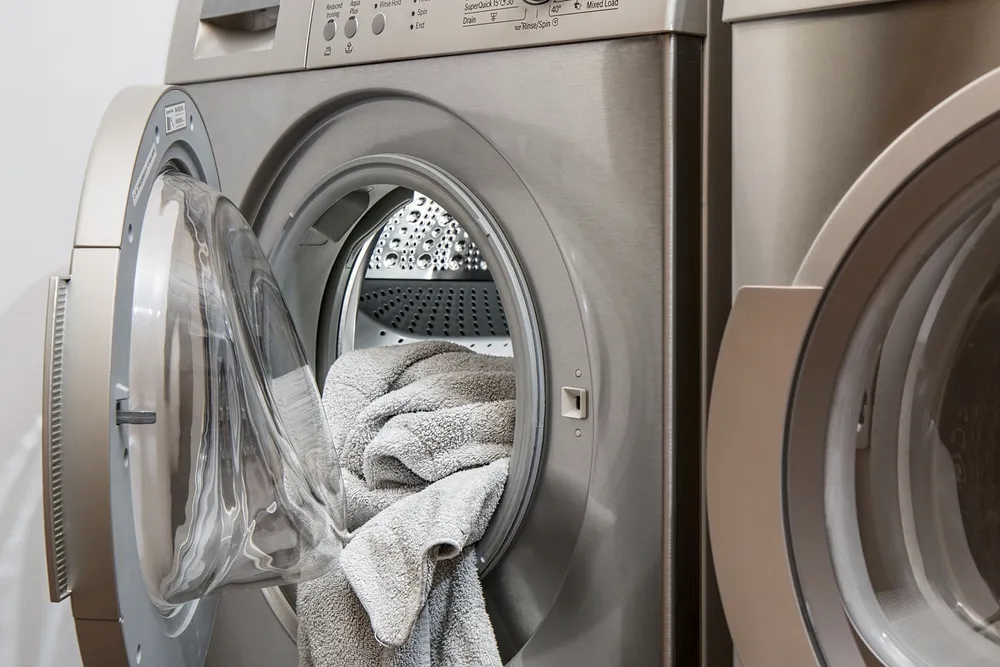Personal Finance / How to Wash Scrubs
If you are a nurse, you practically live in your scrubs. The good news is that scrubs have gotten a lot more interesting. Some of the more experienced nursing professionals remember a time when you had one choice of color and style. Now, the design and fit options are expansive. This makes knowing how to wash scrubs all the more important.
The healthcare profession demands scrubs as the uniform of preference. Everyone from aides and nurses to anesthesiologists and surgeons must wear them for good reasons.
- They help maintain a sterile environment
- They allow for easier identification of healthcare staff
- They protect the skin from harmful bacteria and other unsanitary substances
Now that you know the why of wearing scrubs, let’s get down to the nitty-gritty of how to keep them clean. Nurses work long hours. The last thing they want to do is spend hours sanitizing their scrubs. Here are some tips for the best ways to wash your scrubs that will help them last longer.
Get job matches in your area + answers to all your nursing career questions

Tip #1: Wash your scrubs separately
Never, ever wash your scrubs with another load of laundry. We know it is tempting to save time, but there are reasons why it is never a good idea. You should also have a “scrubs only” laundry hamper. Why? It helps to prevent the spread of infection. Nurses work with patients who have a variety of illnesses and injuries. While hospitals are sanitary places, it can be difficult to stop the spread of some bacteria and other harmful materials. Keeping your scrubs separate before and during washing is the best way to help contain germs.
Tip #2: Pretreating your scrubs
No one likes to think about it, but the fact remains: sometimes nurses get goo on their scrubs. Bodily fluids and foreign contaminants – not to mention the 12 pens in different colors you have shoved in your pockets – all have the potential for stubborn stains on your scrubs. Your best chance at removing them is by pretreating your scrubs before they go into the wash. The kind of stain you have will determine the best course of pretreatment. Here are some of the common stains nurses experience and tips for removing each of them.
Blood
This is a tough one. Since blood is protein and iron-rich, it is extra staining. If it is on a pair of white scrubs, bleach often does the trick. If you are wearing one of your funky designs in a darker color, you may need to use enzyme-based pretreatment. Never use hot water when soaking or washing scrubs stained in blood. The heat can cause the proteins in the blood to set in even further, making it impossible to get the stain out.
Poop
It may be gross, but it does happen. Pretreating with a stain remover like OxyClean will help get the worst part of the stain out. As with blood, stick to using cold or tepid water only.
Vomit
Removing the largest “chunks” from your scrubs immediately is recommended. Then, soak in warm water with a tablespoon of ammonia. You may need to do some gentle rubbing of the affected area while it is in the ammonia/water mixture. After rinsing, apply a stain stick. Blot the area and rinse a second time.
Medication
RNs and LPNs know what a pain a medication stain can be to remove from scrubs. Keeping a Scrub-A-Dub stain stick in your pocket can be a lifesaver for medication stains. If you get medication on your scrubs, treat it immediately with the stain stick to help prevent the stain from setting.
Ink
Rubbing alcohol and ammonia are a nurse’s best friends for removing (non-permanent) ink stains. Apply undiluted and directly to the ink stain. Never rub the stain or it can spread.
Another tip is to disinfect the area where you pretreated your scrubs to prevent the spread of viruses on other surfaces in your home.
Tip #3: To the wash
Pre-treatment is crucial to getting your scrubs stain-free and ready for final sanitizing in the regular wash. There are some helpful steps to follow when washing your scrubs to get them as clean as possible. This will not only help you look professional, but it also will protect your health. Follow these steps when you are ready for the final wash cycle.
Turn your scrubs inside out
Many of the materials used in scrubs are susceptible to pilling in the wash. Pilling is those little lint-like balls of fabric that show up after washing (and are a pain to get off).
Add vinegar
Using 1/4 cup of distilled white vinegar with your regular detergent boosts cleaning power. Vinegar is a natural disinfectant, so it also can help remove germs and other harmful substances.
Use cold or tepid water
It might seem counterintuitive to use cold water to wash your scrubs, since most people assume the hotter the water, the better it disinfects. As we previously discussed, hot water can make stains more difficult to remove.
Dry on high heat
This helps kill any microbes that may remain. There is an important exception to this rule. Check your scrubs as you take them out of the wash. If there are any stains still visible, do not toss them into the dryer. Repeat the pretreatment methods to see if you can get the rest of the stain out.
A final word on caring for your scrubs
Scrubs are an important part of your nursing identity. They can be an expensive part of your wardrobe too (along with other supplies you’ll need). So taking care of them will help them last longer.
Need access to other nursing tips and tools? Stop by our Nursing Career Resources page for additional help.
Get job matches in your area + answers to all your nursing career questions

